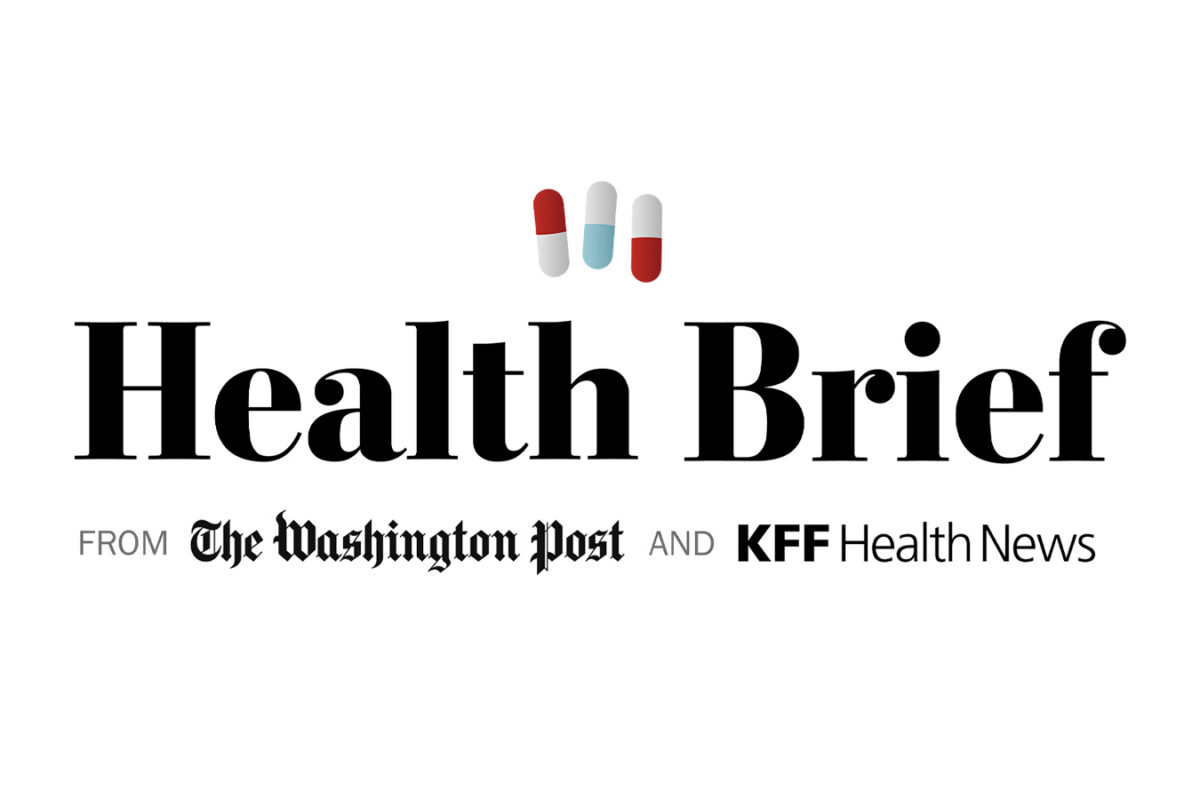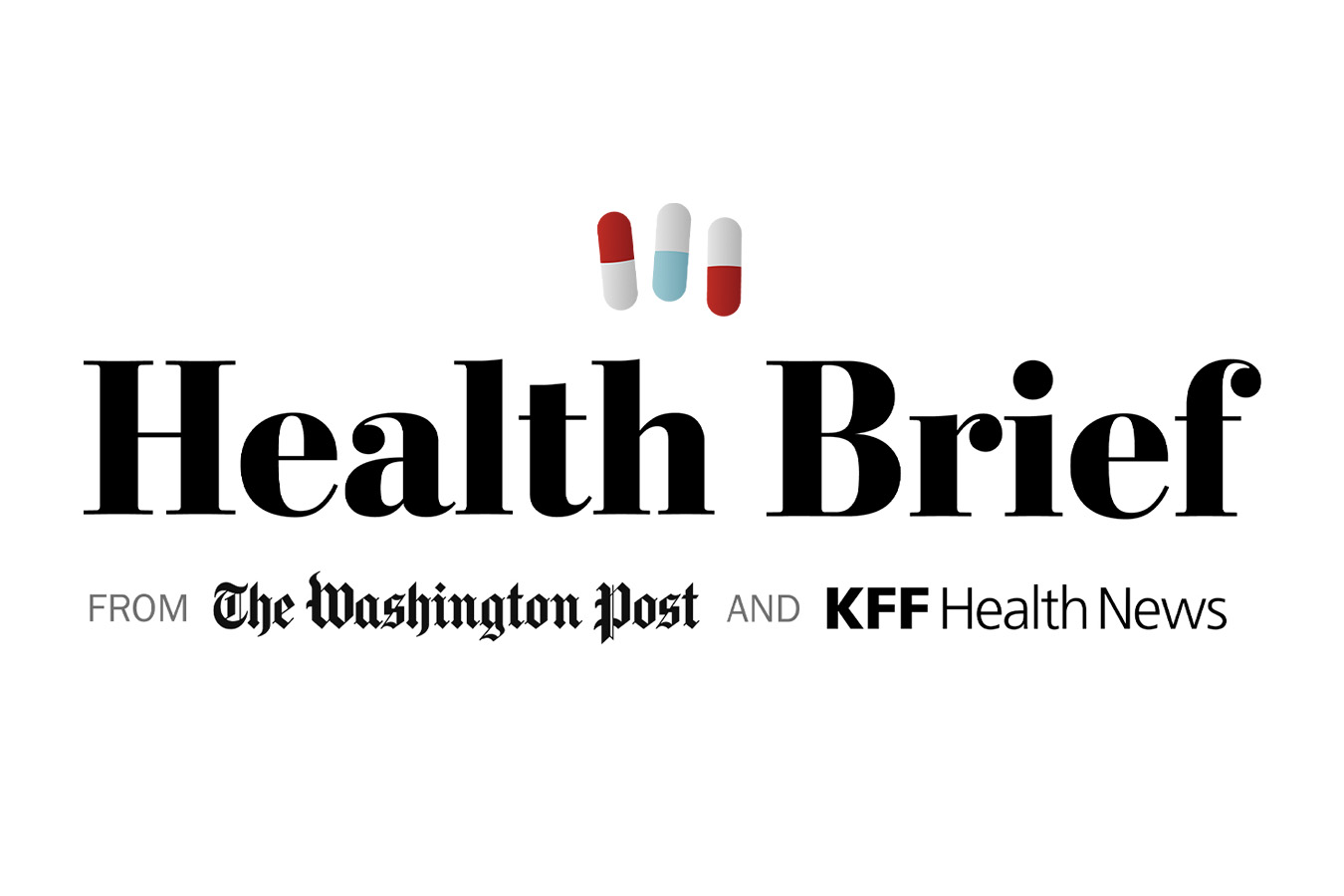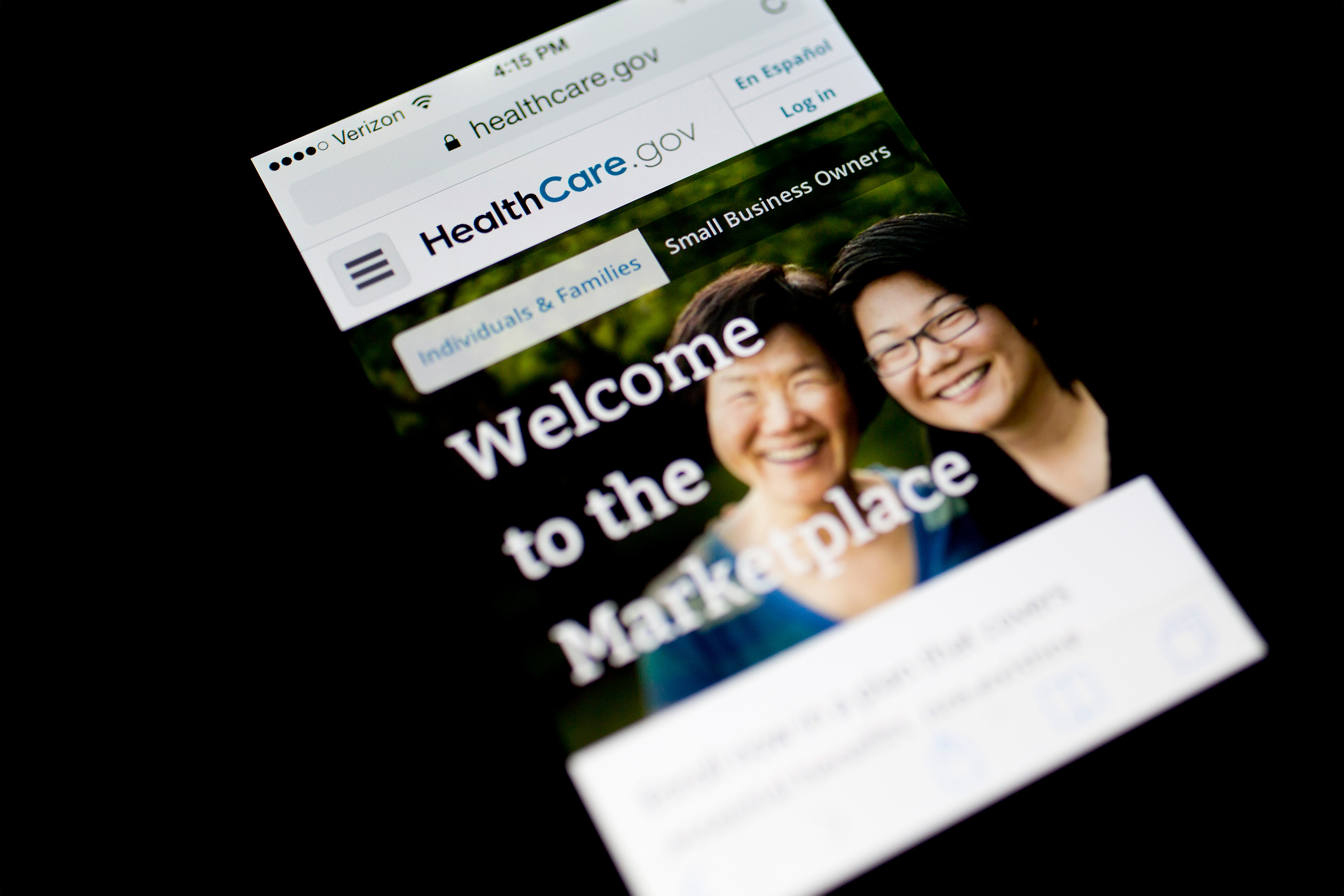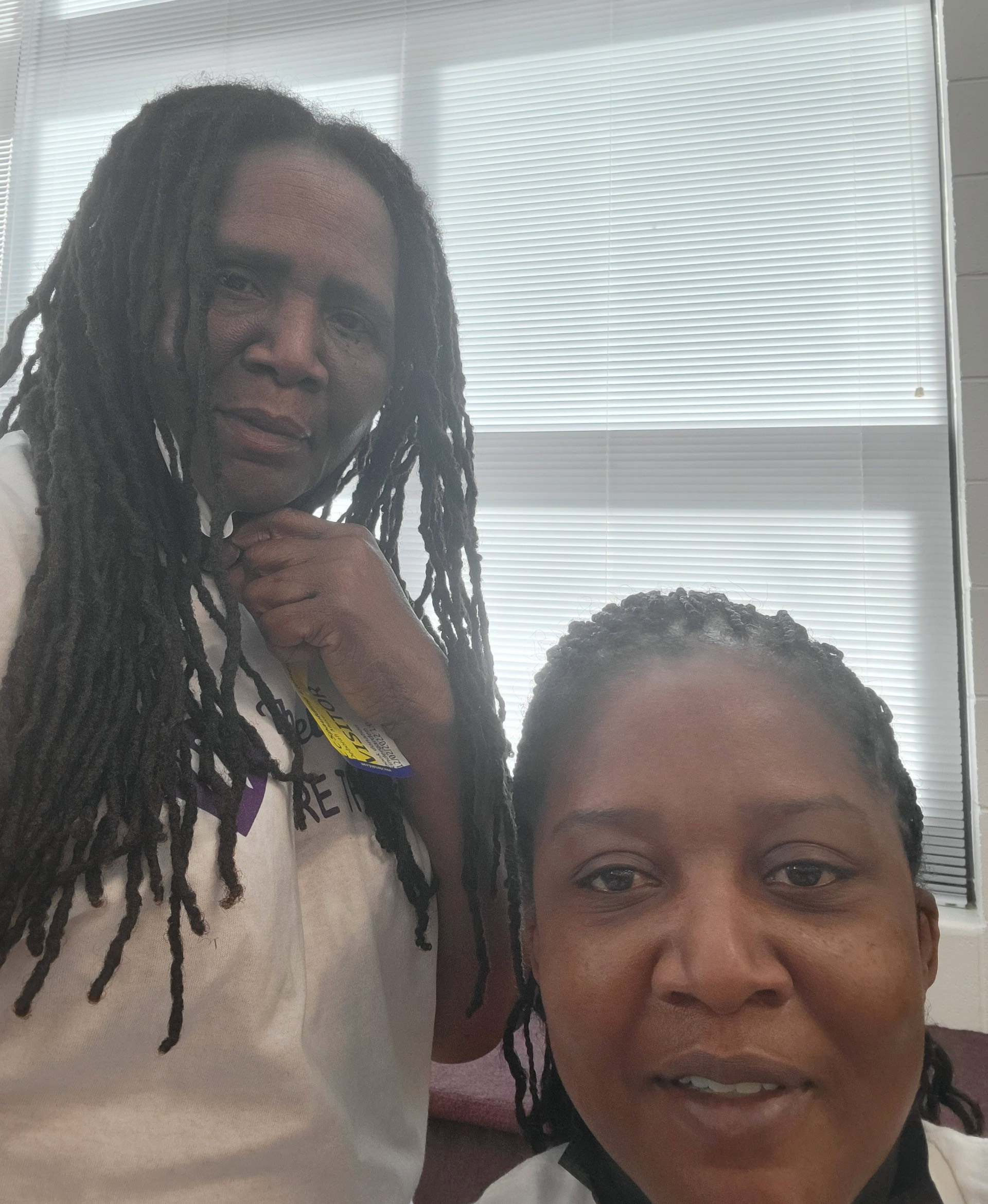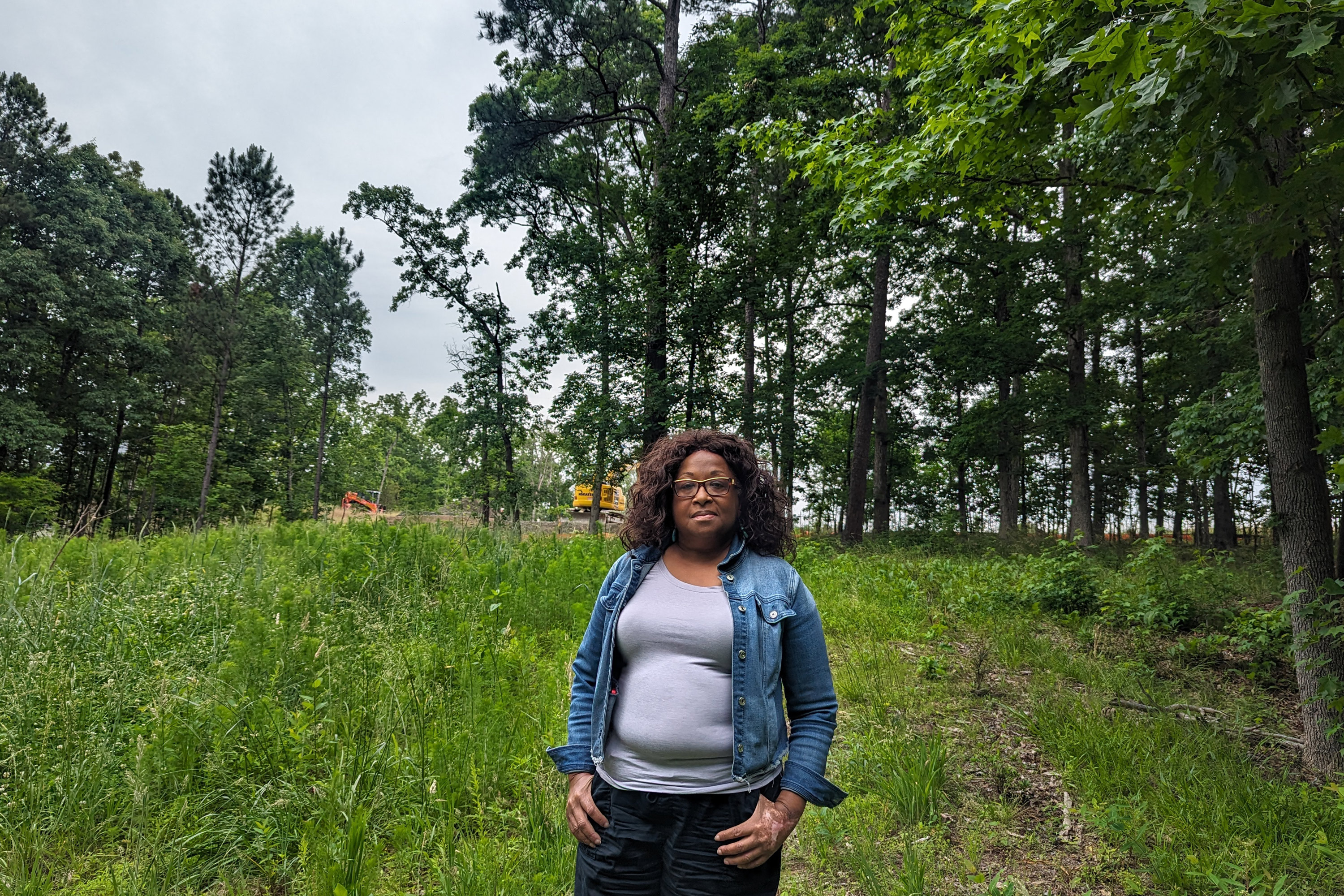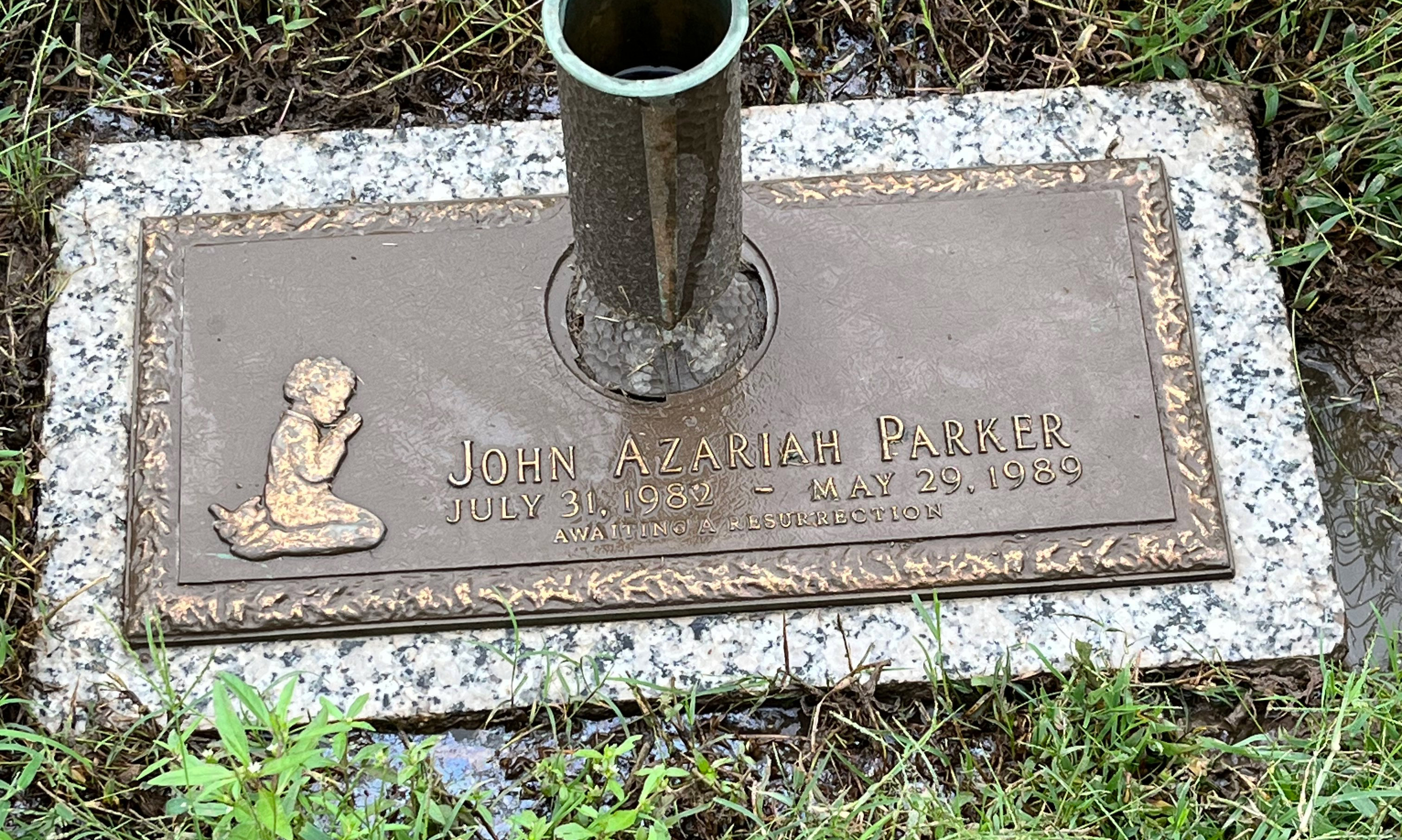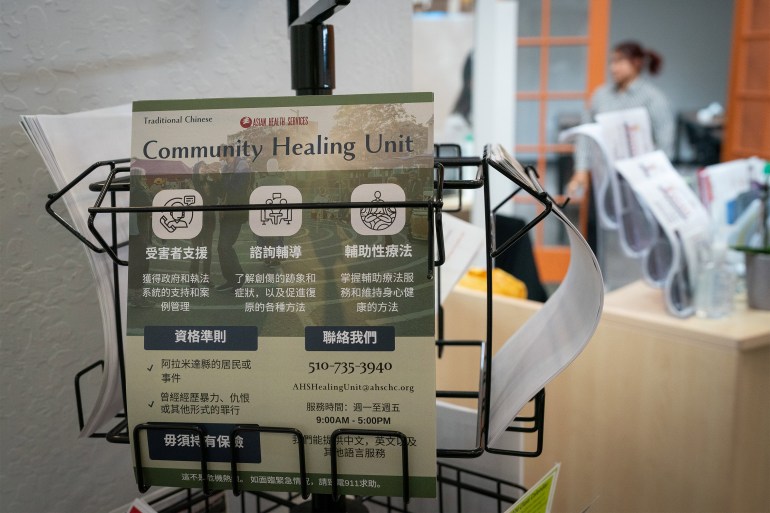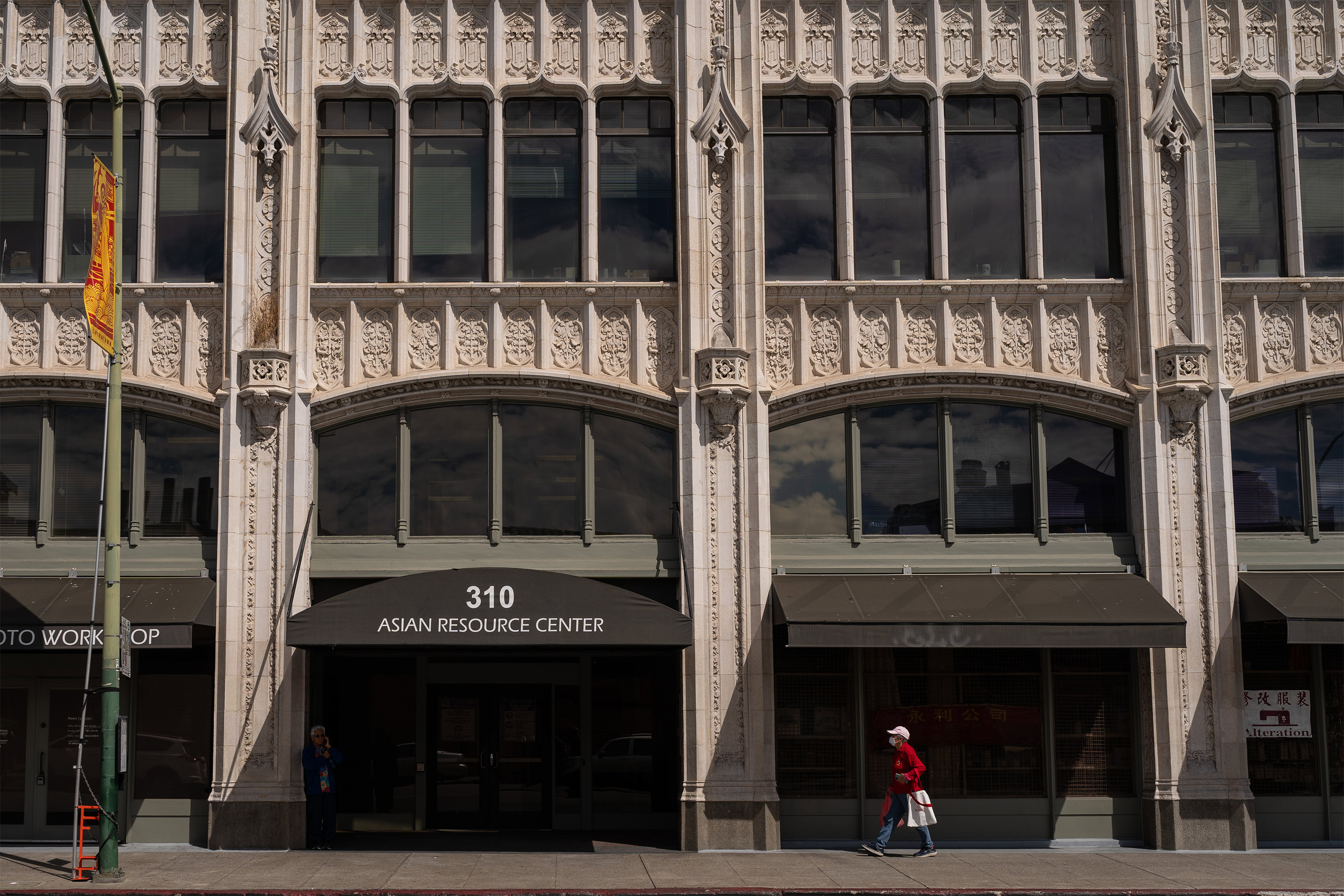Editor’s note: If you are able, we encourage you to listen to the audio of “Silence in Sikeston,” which includes emotion and emphasis not found in the transcript. This transcript, generated using transcription software, has been edited for style and clarity. Please use the transcript as a tool but check the corresponding audio before quoting the podcast.
[Ambient sounds from Sikeston, Missouri’s 2021 Juneteenth celebration — a DJ making an announcement over funky music, people chatting — begin playing.]
Cara Anthony: It’s 2021. It’s hot and humid. We’re at a park in the heart of Sunset — Sikeston, Missouri’s historically Black neighborhood.
Emory: Today is Juneteenth, baby.
Cara Anthony: The basketball courts are jumping. And old-school funk is blaring from the speakers. Kids are playing.
Cara Anthony: [Laughter] Are you enjoying the water?
Cara Anthony: People are lining up for barbecue.
I’ve been here reporting on the toll racism and violence can take on a community’s health. But today, I’m hoping to capture a little bit of Sikeston’s joy.
Taneshia Pulley: When I look out to the crowd of my people, I see strength. I see power. I just see all magic.
Cara Anthony: I drift over to a tent where people are getting their blood pressure, weight, and height checked … health screenings for free.
Cara Anthony: I’m a journalist.
Community Health Worker: Ooooh! Hi! Hi!
Cara Anthony: The ladies working the booth are excited I’m there to report on the event.
Cara Anthony: OK, and I’m a health journalist.
Community health worker: Baby, that’s what I told them. Yeah, she healthy. [Laughter]
[Dramatic instrumental music plays.]
Cara Anthony: This Juneteenth gathering is happening a little over a year after Sikeston police officers shot and killed 23-year-old Denzel Taylor.
We made a documentary about Denzel’s death and the death of another young Black man — also killed in Sikeston.
Denzel was shot by police. Nearly 80 years earlier, Cleo Wright was lynched by a white mob.
Both were killed before they got their day in court.
In these years of reporting, what I’ve found is that many Black families worry that their kids don’t have an equal chance of growing up healthy and safe in Sikeston.
[Dramatic instrumental ends.]
Rosemary Owens: Being Black in the Bootheel can get you killed at any age.
Cara Anthony: That’s Rosemary Owens. She raised her children here in Southeast Missouri.
Cara Anthony: About 10 Sikeston police officers showed up to Juneteenth — for security and to connect with the community. Some are in uniform; some are in plain clothes.
Rosemary has her doubts about why they came today.
Cara Anthony: You see the police chief talking to people. What’s going through your mind as you see them milling about?
Rosemary Owens: I hope they are real and wanting to close the gap between the African Americans and the white people.
Anybody can come out and shake hands. But at the end of the day, did you mean what you said? Because things are still going on here in Sikeston, Missouri.
Cara Anthony: For Rosemary, this brings to mind an encounter with the police from years ago.
[Slow, minor, instrumental music plays softly.]
When her son was maybe 16 years old, she says, she and her sister gave their boys the keys to their new cars — told them they could hang out in them.
Rosemary had gotten her new car for Mother’s Day.
Rosemary Owens: A brand-new red Dodge Caravan. We, we knew the boys were just going from the van to the car. You know, just showing out — they were boys. They weren’t driving.
Cara Anthony: Someone nearby saw the boys …
Rosemary Owens: … called and told the police that two Black men were robbing cars.
When the boys saw the police come up, there was three police cars. So they were like, something’s going on. So their intention, they were like, they were trying to run to us. And my brother said, stop. When they looked back, when the police got out of the car, they already had their guns drawn on my son and my nephew.
Cara Anthony: That’s what Rosemary thinks about when she sees Sikeston police at Juneteenth.
[Slow, minor, instrumental music ends.]
[“Silence in Sikeston” theme song plays.]
Cara Anthony: In this podcast series, we’ve talked about some of the ways racism makes Black people sick. But Juneteenth has me thinking about how we get free — how we STOP racism from making us sick.
The public health experts say it’s going to take systemwide, institutional change.
In this episode, we’re going to examine what that community-level change looks like — or at least what it looks like to make a start.
From WORLD Channel and KFF Health News, distributed by PRX, this is “Silence in Sikeston.”
Episode 4 is our final episode: “Is There a Cure for Racism?”
[“Silence in Sikeston” theme song ends.]
James McMillen: How you doing?
Juneteenth celebration attendee: Good. Good.
James McMillen: Good to see you, man.
Juneteenth celebration attendee: What’s up? How are you?
Cara Anthony: When I spot Sikeston’s director of public safety in his cowboy hat, sipping soda from a can, I head over to talk.
James McMillen: Well, you know, I just, I, I’m glad to be … on the inside of this.
Cara Anthony: James McMillen leads the police department. He says he made it a point to come to Juneteenth. And he encouraged his officers to come, too.
James McMillen: I remember as being a young officer coming to work here, not knowing anybody, driving by a park and seeing several Black people out there. And I remember feeling, you know, somewhat intimidated by that. And I don’t really know why.
I hadn’t always been, um, that active in the community. And, um, I, I have been the last several years and I’m just wanting to teach officers to do the same thing.
Cara Anthony: The chief told me showing up was part of his department’s efforts to repair relations with Sikeston’s Black residents.
James McMillen: What’s important about this is, being out here and actually knowing people, I think it builds that trust that we need to have to prevent and solve crimes.
Cara Anthony: A few minutes into our conversation, I notice a teenager and her friend nearby, listening.
Cara Anthony: Yeah, we have two people who are watching us pretty closely. Come over here. Come over here. Tell us your names.
Lauren: My name is Lauren.
Michaiahes: My name is Michaiahes.
Cara Anthony: Yeah. And what are you all … ?
James McMillen: I saw you over there.
Cara Anthony: So, what do you think about all of this?
Michaiahes: Personally, I don’t even know who this is because I don’t mess with police because, because of what’s happened in the past with the police. But, um …
Cara Anthony: As she starts to trail off, I encourage her to keep going.
Cara Anthony: He’s right here. He’s in charge of all of those people.
Michaiahes: Well, in my opinion, y’all should start caring about the community more.
Cara Anthony: What are you hearing? She’s speaking from the heart here, Chief. What are you hearing?
James McMillen: Well, you know what? I agree with everything she said there.
Cara Anthony: She’s confident now, looking the chief in the eye.
Michaiahes: And let’s just be honest: Some of these police officers don’t even want to be here today. They’re just here to think they’re doing something for the community.
James McMillen: Let’s be honest. Some of these are assumptions that y’all are making about police that y’all don’t really know.
[Subtle propulsive music begins playing.]
Michaiahes: If we seen you protecting community, if we seen you doing what you supposed to do, then we wouldn’t have these assumptions about you.
James McMillen: I just want to say that people are individuals. We have supervisors that try to keep them to hold a standard. And you shouldn’t judge the whole department, but, but just don’t judge the whole department off of a few. No more than I should judge the whole community off of a few.
Cara Anthony: But here’s the thing … in our conversations over the years, Chief McMillen has been candid with me about how, as a rookie cop, he had judged Sikeston’s Black residents based on interactions with just a few.
James McMillen: Some of, um, my first calls in the Black community were dealing with, obviously, criminals, you know? So if first impressions mean anything, that one set a bad one. I had, um, really unfairly judging the whole community based on the few interactions that I had, again, with majority of criminals.
Cara Anthony: The chief says he’s moved past that way of thinking and he’s trying to help his officers move past their assumptions.
And he told me about other things he wants to do …
Hire more Black officers. Invest in racial-bias awareness education for the department. And open up more lines of communication with the community.
James McMillen: I know that we are not going to see progress or we’re not going to see success without a little bit of pain and discomfort on our part.
Cara Anthony: I don’t think I’ve ever heard the chief use the term institutional change, but the promises and the plans he’s making sound like steps in that direction.
Except … here’s something else the chief says he wants …
[Subtle propulsive music ends with a flourish.]
James McMillen: As a police officer, I would like to hear more people talk about, um, just complying with the officer.
Cara Anthony: That phrase is chilling to me.
[Quiet, dark music starts playing.]
When I hear “just comply” … a litany of names cross my mind.
Philando Castile.
Sonya Massey.
Tyre Nichols.
Cara Anthony: After Denzel Taylor was killed, people felt unsafe. I talked to a lot of residents on the record about them feeling like they didn’t know if they could be next.
One thing that you told me was, like, well, one thing that people can do is comply with the officers, you know, if they find themselves having an interaction with law enforcement.
James McMillen: Well, I mean, I think that’s, that’s a good idea to do.
And if the person is not complying, that officer has got to be thinking, is this person trying to hurt me? So, asking people to comply with the officer’s command — that’s a reasonable statement.
Cara Anthony: But, it’s well documented: Black Americans are more likely than our white peers to be perceived as dangerous by police.
That perception increases the chances we’ll be the victim of deadly force. Whether we comply — or not.
[Quiet, dark music ends.]
That’s all to say … even with the promise of more Black officers in Sikeston and all the chief’s other plans, I’m not sure institutional change in policing is coming soon to Sikeston.
[Sparse electronic music starts playing.]
Cara Anthony: I took that worry to Gail Christopher. She has spent her long career trying to address the causes of institutional racism.
Cara Anthony: We’ve been calling most of our guests by their first name, but what’s your preference? I don’t want to get in trouble with my mom on this, you know? [Cara laughs.]
Gail Christopher: If you don’t mind, Dr. Christopher is good.
Cara Anthony: OK. All right. That sounds good. I’m glad I asked.
Cara Anthony: Dr. Christopher thinks a lot about the connections between race and health. And she’s executive director of the National Collaborative for Health Equity. Her nonprofit designs strategies for social change.
She says the way to think about starting to fix structural racism … is to think about the future.
Gail Christopher: What do you want for your daughter? What do I want for my children? I want them not to have interactions with the police, No. 1, right?
Uh, so I want them to have safe places to be, to play, to be educated … equal access to the opportunity to be healthy.
Cara Anthony: But I wonder if that future is even possible.
[Sparse electronic music ends.]
Cara Anthony: Is there a cure for racism? And I know it’s not that simple, but is there a cure?
Gail Christopher: I love the question, right? And my answer to you would be yes. It is a process, and it’s not enough to march and get a victory. We have to transform the systems of inequity in this country.
Cara Anthony: And Dr. Christopher says it is possible. Because racism is a belief system.
[Hopeful instrumental music plays.]
Gail Christopher: There is a methodology that’s grounded in psychological research and social science for altering our beliefs and subsequently altering our behaviors that are driven by those beliefs.
Cara Anthony: To get there, she says, institutions need a rigorous commitment to look closely at what they are doing — and the outcomes they’re creating.
Gail Christopher: Data tracking and monitoring and being accountable for what’s going on.
We can’t solve a problem if we don’t admit that it exists.
Cara Anthony: One of her favorite examples of what it looks like to make a start toward systemic change comes from the health care world.
I know we’ve been talking about policing so far, but — bear with me here — we’re going to pivot to another way institutional bias kills people.
A few years ago, a team of researchers at the Brigham and Women’s Hospital in Boston reviewed admission records for patients with heart failure. They found that Black and Latinx people were less likely than white patients to be admitted to specialized cardiology units.
Gail Christopher: Without calling people racist, they saw the absolute data that showed that, wait a minute, we’re sending the white people to get the specialty care and we’re not sending the people of color.
Cara Anthony: So, Brigham and Women’s launched a pilot program.
When a doctor requests a bed for a Black or Latinx patient with heart failure, the computer system notifies them that, historically, Black and Latinx patients haven’t had equal access to specialty care.
The computer system then recommends the patient be admitted to the cardiology unit. It’s still up to the doctor to actually do that.
The hard data’s not published yet, but we checked in with the hospital, and they say the program seems to be making a difference.
Gail Christopher: It starts with leadership. Someone in that system has the authority and makes the decision to hold themselves accountable for new results.
[Hopeful instrumental music ends.]
Cara Anthony: OK, so it could be working at a hospital. Let’s shift back to policing now.
Gail Christopher: There should be an accountability board in that community, a citizens’ accountability board, where they are setting measurable and achievable goals and they are holding that police department accountable for achieving those goals.
Cara Anthony: But, like, do Black people have to participate in this? Because we’re tired.
Gail Christopher: Listen, do I know that we’re tired! Am I tired? After 50 years? Uh, I think that there is work that all people have to do. This business of learning to see ourselves in one another, to be fully human — it’s all of our work.
[Warm, optimistic instrumental music plays.]
Now, does that preclude checking out at times and taking care of yourself? I can’t tell you how many people my age who are no longer alive today, who were my colleagues and friends in the movement. But they died prematurely because of this lack of permission to take care of ourselves.
Cara Anthony: Rest when you need to, she says, but keep going.
Gail Christopher: We have to do that because it is our injury. It is our pain. And I think we have the stamina and the desire to see it change.
Cara Anthony: Yep. Heard. It’s all of our work.
Dr. Christopher has me thinking about all the Black people in Sikeston who aren’t sitting around waiting for someone else to change the institutions that are hurting them.
People protested when Denzel Taylor was killed even with all the pressure to stay quiet about it.
Protesters: Justice for Denzel on 3. 1, 2, 3 … Justice for Denzel! Again! 1, 2, 3 … Justice for Denzel!
Cara Anthony: And I’m thinking about the people who were living in the Sunset neighborhood of Sikeston in 1942 when Cleo Wright was lynched.
Harry Howard: They picked up rocks and bricks and crowbars and just anything to protect our community.
Cara Anthony: And Sunset did not burn.
[Warm, optimistic instrumental music begins fading out.]
[Piano starts warming up.]
Cara Anthony: After nearly 80 years of mostly staying quiet about Cleo’s lynching, Sikeston residents organized a service to mark what happened to him — and their community.
Reverend: We are so honored and humbled to be the host church this evening for the remembrance and reconciliation service of Mr. Cleo Wright.
[Piano plays along with Pershard singing.]
Pershard Owens: [Singing] It’s been a long, long time coming, but I know a change gonna come, oh yes it will. It’s been too hard a-livin but I’m afraid to die and I don’t know what’s up next, beyond the sky …
[Pershard singing and piano accompaniment fade out.]
Cara Anthony: I want to introduce you to that guy who was just singing then. His name is Pershard Owens.
Remember Rosemary Owens? The woman who told us about someone calling the police on her son and nephew when they were playing with their parents’ new cars? Pershard is Rosemary’s younger son.
Pershard Owens: Yeah, I definitely remember that.
Cara Anthony: Even after all this time, other people didn’t want to talk to us about it. We couldn’t find news coverage of the incident. But Pershard remembers. He was in his weekly karate practice when it happened. He was 10 or 11 years old.
Pershard Owens: My brother and cousin were, like, they were teens. So what do you think people are going to feel about the police when they do that, no questions asked, just guns drawn?
Cara Anthony: Pershard’s dad works as a police officer on a different police force in the Bootheel. Pershard knows police. But that didn’t make it any less scary for him.
Pershard Owens: You know, my parents still had to sit us down and talk and be like, “Hey, this is, that’s not OK, but you can’t, you can’t be a victim. You can’t be upset.” That’s how I was taught. So we acknowledge the past. But we don’t, we don’t stay down.
Cara Anthony: So years later, when Chief James McMillen started a program as a more formal way for people in Sikeston and the police to build better relationships, Pershard signed up. They started meeting in 2020.
The group is called Police and Community Together, or PACT for short.
[Sparse, tentative music begins playing.]
Pershard Owens: It was a little tense that first couple of meetings because nobody knew what it was going to be.
Cara Anthony: This was only five months after Sikeston police killed Denzel Taylor.
PACT is not a citizens’ accountability board. The police don’t have to answer to it.
The committee met every month. For a while. But they haven’t met in over a year now.
Pershard Owens: We would have steps forward and then we would have three steps back.
Cara Anthony: People have different accounts for why that is. Busy schedules. Mutual suspicion. Other things police officers have done that shook the trust of Black residents in Sikeston.
Pershard Owens: And people were like, bro, like, how can you work with these people?
The community is like, I can’t fully get behind it because I know what you did to my little cousin and them. Like, I know what the department did back in, you know, 15 years ago, and it’s hard to get past that.
So, I mean, I’m getting both sides, like, constantly, and listen, that is, that is tough.
[Sparse, tentative music ends.]
Cara Anthony: But Pershard says something important changed because he started working with PACT.
Pershard Owens: Chief did not like me at first [Pershard laughs]. He did not.
Chief didn’t … me and Chief did not see eye to eye. Because he had heard things about me and he — people had told him that I was, I was anti-police and hated police officers, and he came in with a defense up.
So, it took a minute for me and him to, like, start seeing each other in a different way. But it all happened when we sat down and had a conversation.
[Slow instrumental music begins playing.]
Cara Anthony: Just have a conversation. It sounds so simple; you’re probably rolling your eyes right now hearing it.
But Pershard says … it could be meaningful.
Pershard Owens: I truly want and believe that we can be together and we can work together and we can have a positive relationship where you see police and y’all dap each other up and y’all legit mean it. I think that can happen, but a lot of people have to change their mindsets.
Cara Anthony: That’s a challenge Pershard is offering to police AND community members: Have a conversation with someone different from you. See if that changes the way you think about the person you’re talking to. See if it changes your beliefs.
The more people do that, the more systems can change.
Pershard Owens: We got to look in the mirror and say, “Am I doing what I can to try and change the dynamic of Sikeston, even if it does hurt?”
Cara Anthony: Pershard says he’s going to keep putting himself out there. He ran for City Council in 2021. And even though he lost, he says he doesn’t regret it.
Pershard Owens: When you’re dealing with a place like Sikeston, it’s not going to change overnight.
Cara Anthony: And he’s glad he worked with PACT. Even if the community dialogue has fizzled for now, he’s pleased with the new relationship he built with Chief McMillen. And all of this has broadened his view of what kind of change is possible.
[Slow instrumental music ends.]
Pershard Owens: If you want something that has never been done, you have to go places that you’ve never been.
[“Silence in Sikeston” theme music plays.]
Cara Anthony: Places that you’ve never been … stories that you’ve never told out loud … maybe all of that helps build a Sikeston where Black residents can feel safer. Where Black people can live healthier lives.
A world you might not be able to imagine yet, but one that could exist for the next generation.
[“Silence in Sikeston” theme music ends.]
[Upbeat instrumental music plays.]
Cara Anthony: Thanks for listening to “Silence in Sikeston.”
Next, go watch the documentary — it’s a joint production from Retro Report and KFF Health News, presented in partnership with WORLD.
Subscribe to WORLD Channel on YouTube. That’s where you can find the film “Silence in Sikeston,” a Local, USA special.
If you made it this far, thank you. Let me know how you’re feeling.
I’d love to hear more about the conversations this podcast has sparked in your life. Leave us a voicemail at (202) 654-1366.
And thanks to everyone in Sikeston for sharing your stories with us.
This podcast is a co-production of WORLD Channel and KFF Health News and distributed by PRX.
It was produced with support from PRX and made possible in part by a grant from the John S. and James L. Knight Foundation.
This audio series was reported and hosted by me, Cara Anthony.
Audio production by me, Zach Dyer. And me, Taylor Cook.
Editing by me, Simone Popperl.
And me, managing editor Taunya English.
Sound design, mixing, and original music by me, Lonnie Ro.
Podcast art design by Colin Mahoney and Tania Castro-Daunais.
Tarena Lofton and Hannah Norman are engagement and social media producers for the show.
Oona Zenda and Lydia Zuraw are the landing page designers.
Lynne Shallcross is the photo editor, with photography from Michael B. Thomas.
Thank you to vocal coach Viki Merrick.
And thank you to my parents for all their support over the four years of this project.
Music in this episode is from Epidemic Sound and Blue Dot Sessions.
Some of the audio you heard across the podcast is also in the film.
For that, special thanks to Adam Zletz, Matt Gettemeier, Roger Herr, and Philip Geyelin.
Kyra Darnton is executive producer at Retro Report.
I was a producer on the film.
Jill Rosenbaum directed the documentary.
Kytja Weir is national editor at KFF Health News.
WORLD Channel’s editor-in-chief and executive producer is Chris Hastings.
Help us get the word out about “Silence in Sikeston.” Write a review or give us a quick rating wherever you listen to this podcast.
Thank you! It makes a difference.
Oh yeah! And tell your friends in real life too!
[Upbeat instrumental music ends.]

